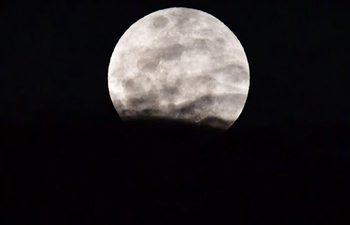WASHINGTON, Feb. 1 (Xinhua) -- An international team of astronomers have determined Centaurus A, a massive elliptical galaxy 13 million light-years from Earth, is accompanied by a number of dwarf satellite galaxies in a narrow disk.
The study, published on Thursday in the journal Science, showed that such a disc-like pattern does not fit with a standard model of cosmology that assumes the existence of dark matter.
According to the standard model that describes the formation of galaxies, the satellite galaxies should be distributed randomly and should orbit the host galaxy in an unordered way.
Observations of the Milky Way and the Andromeda galaxy, however, challenge this model. A few years ago, astronomers discovered that satellite galaxies are arranged in disc-shaped planes around the host galaxy and co-rotate within such planes. But advocates of the standard model interpreted these structures as isolated cases.
However, new findings by researchers from Switzerland, America and Australia suggested that these are not statistical outliers, but are part of a widespread phenomenon.
The researchers analyzed the movement of satellite galaxies around Centaurus A and found that those satellites are arranged on a plane that is perpendicular to the parent galaxy.
The researchers said that 14 of the 16 satellite galaxies follow the same pattern of movement and are likely rotating within the plane around the main galaxy. According to model simulations with dark matter, however, only half a percent of satellite systems in the local universe at most should behave this way.
The possibility of coincidence can be ruled out, as this result has now been detected a third time, in Centaurus A.
The results also strengthen the supposition that satellite galaxies form during the collision of two larger galaxies, out of small debris ejected by tidal forces.
















